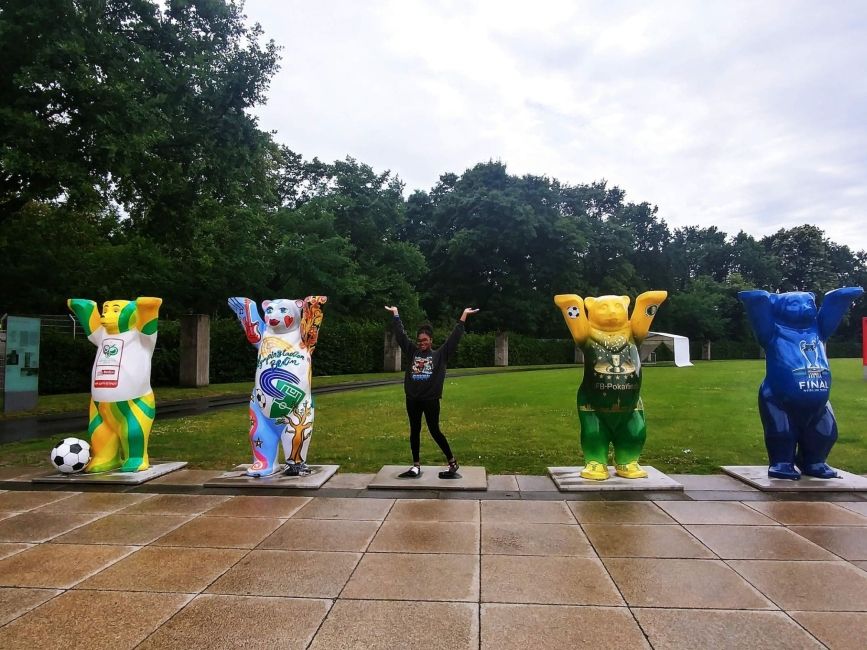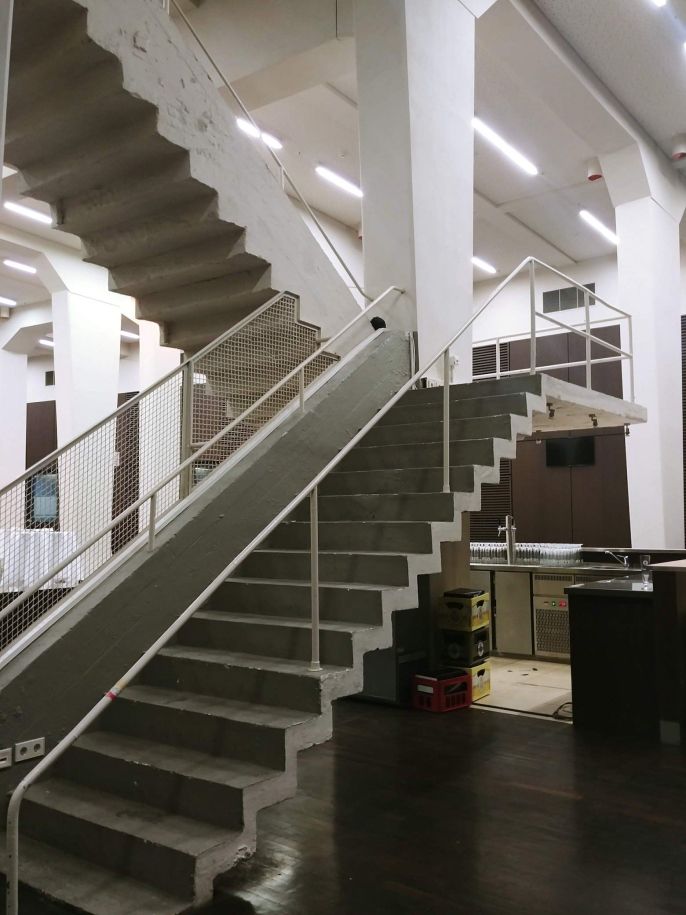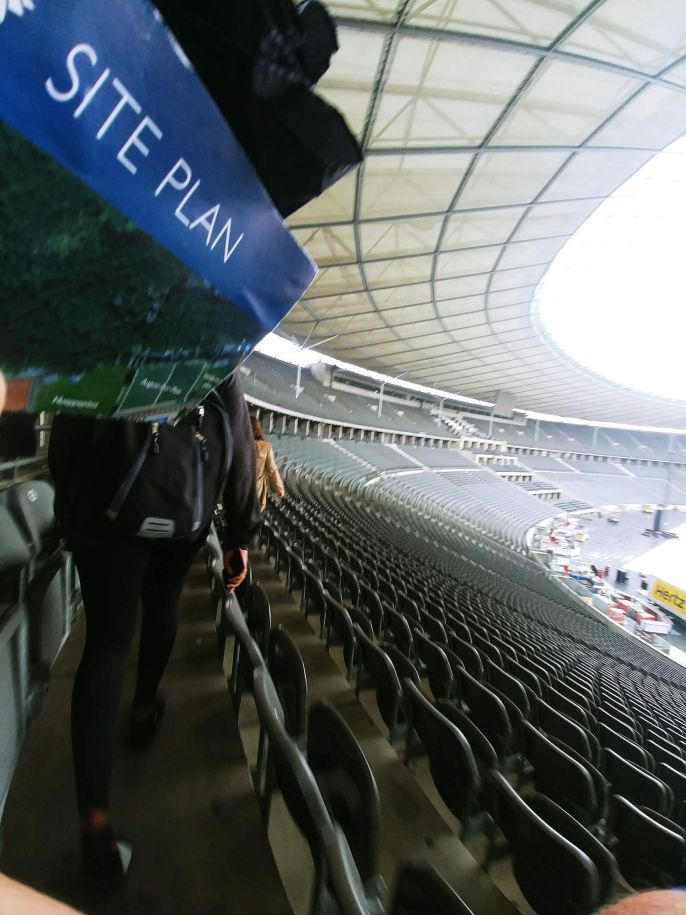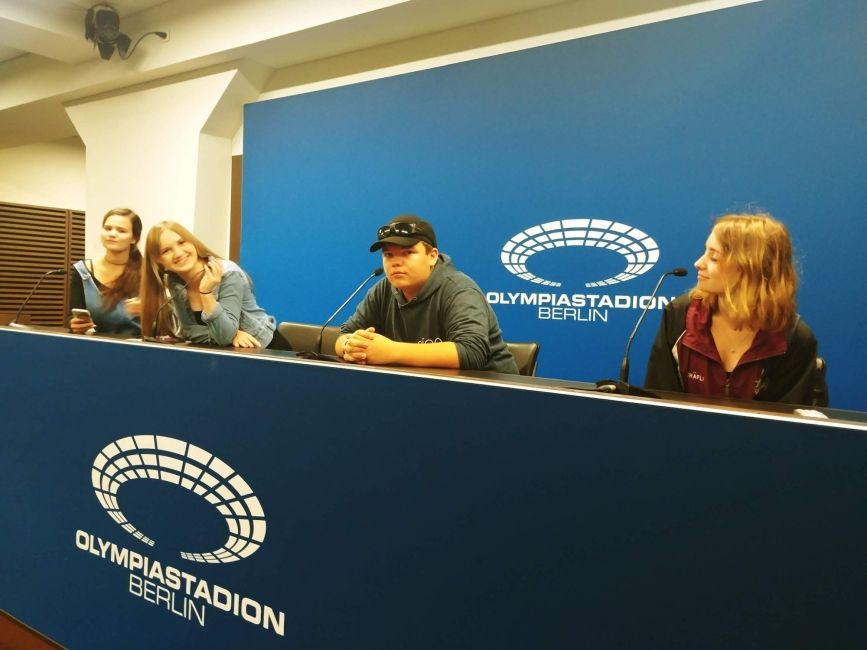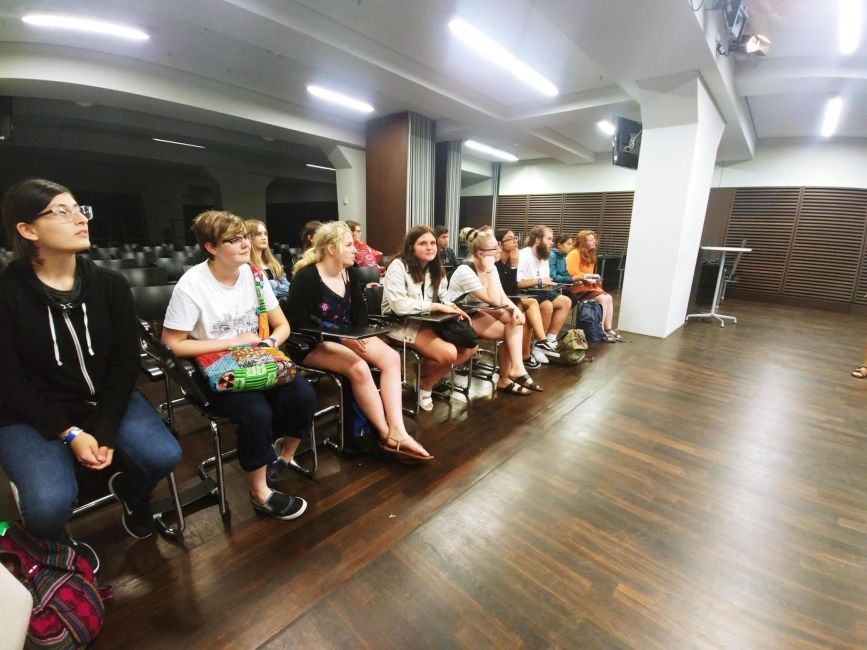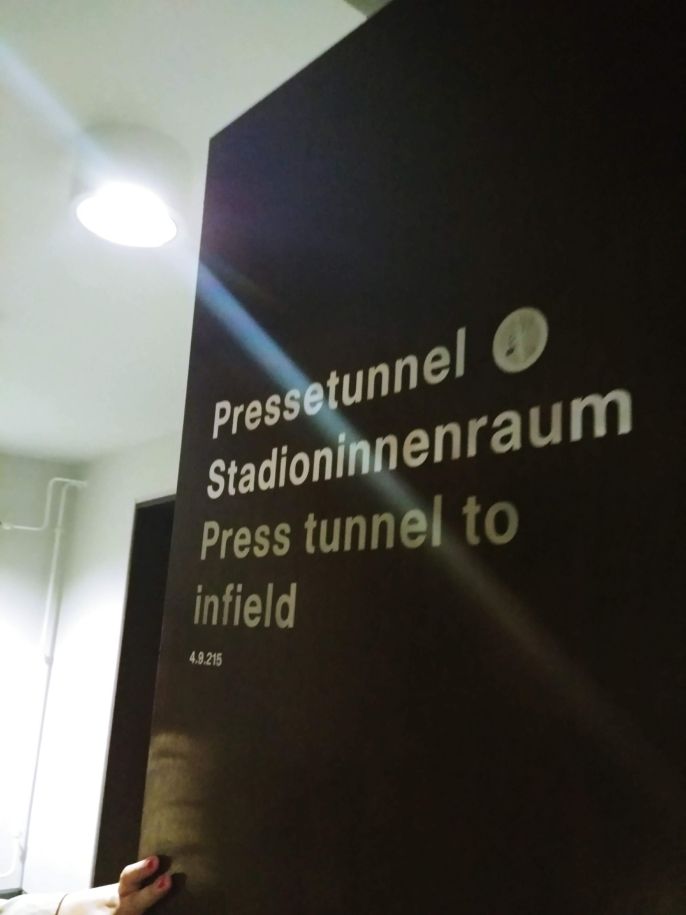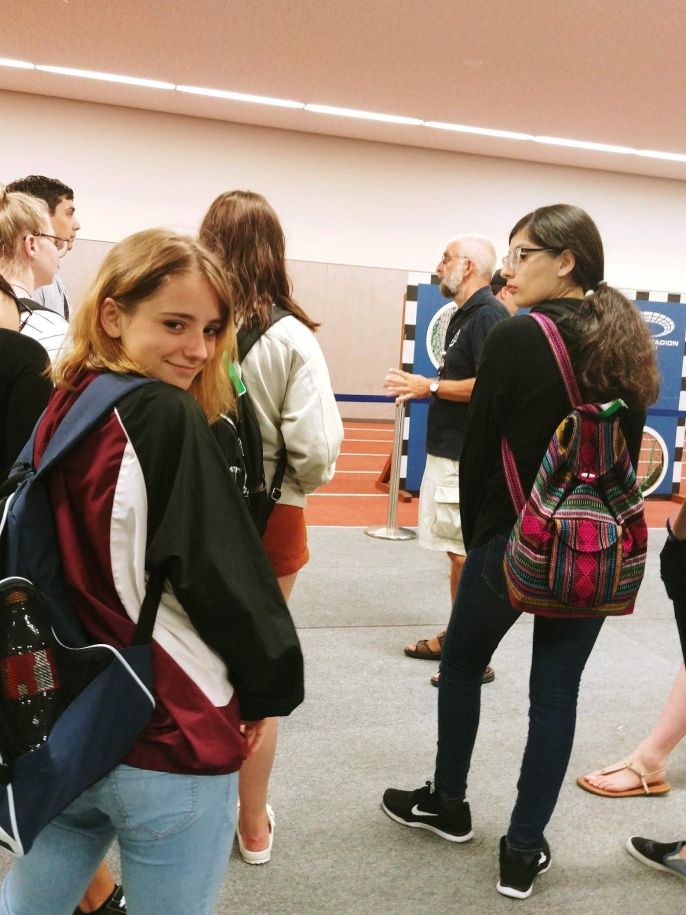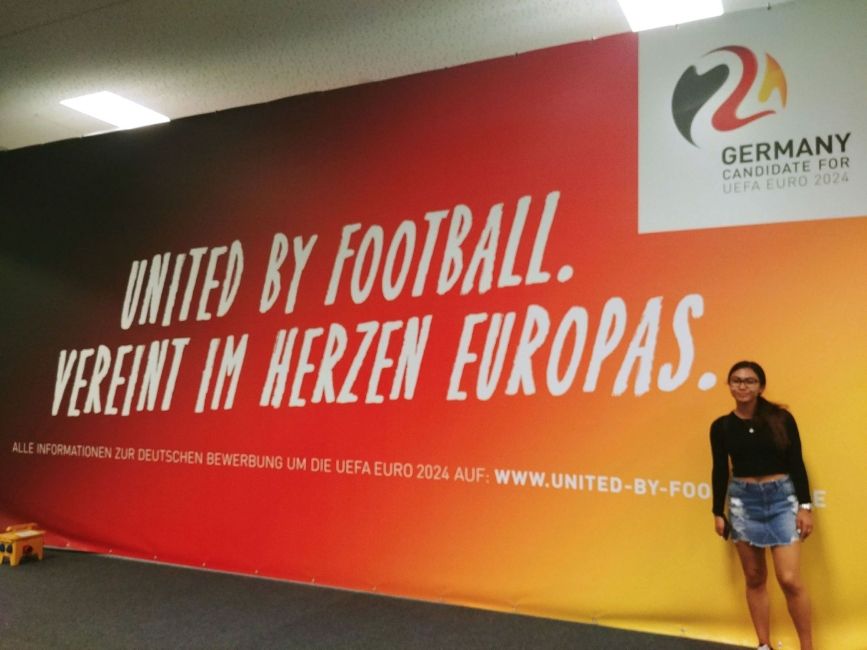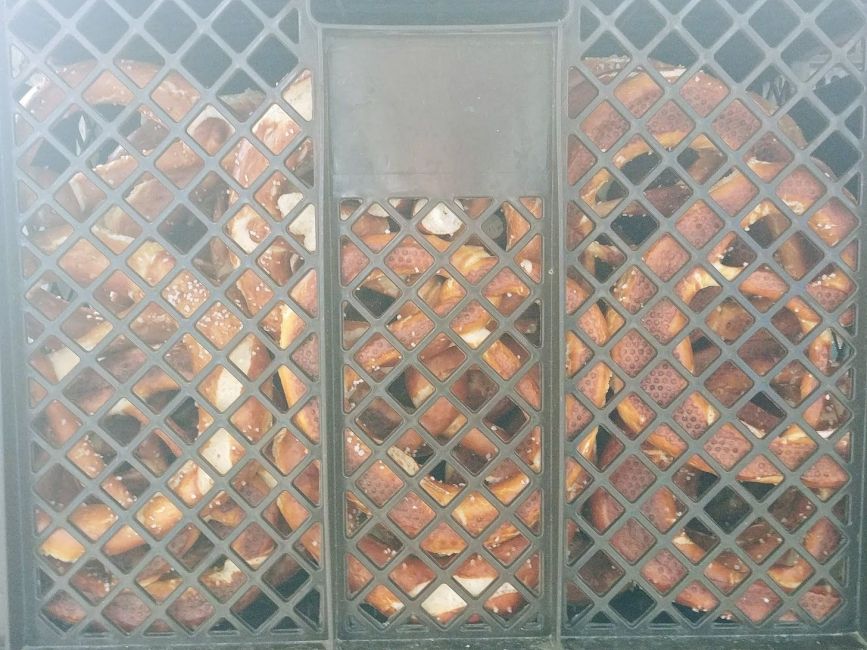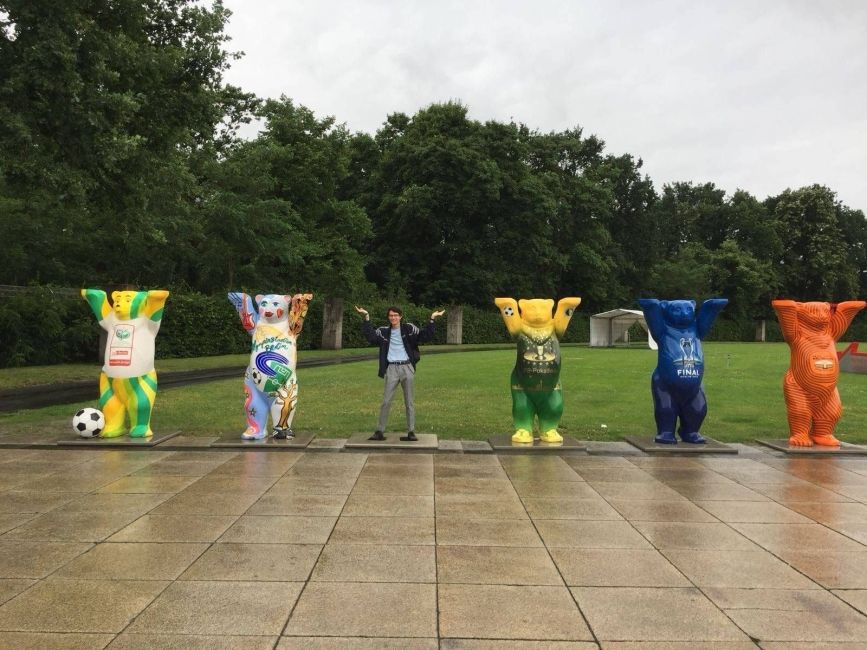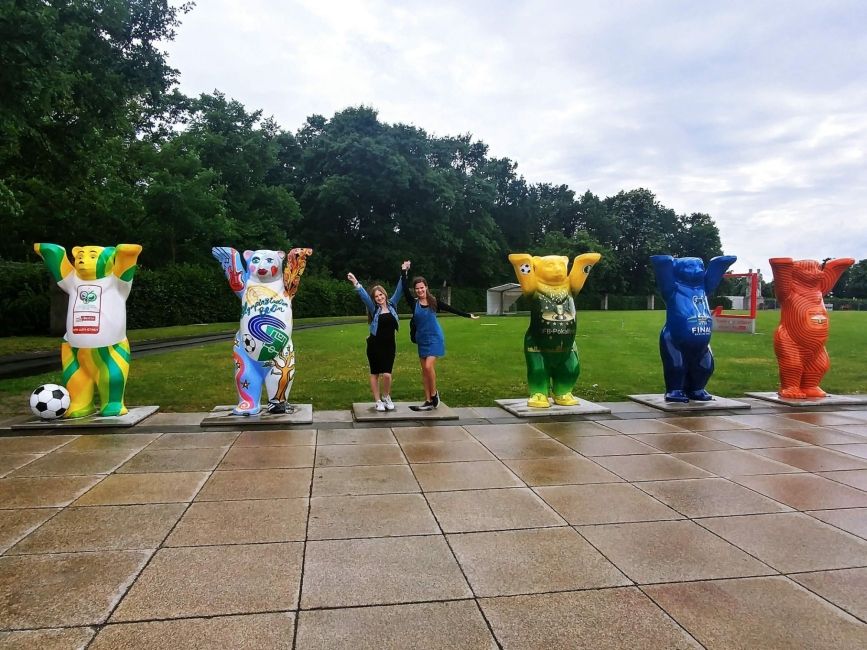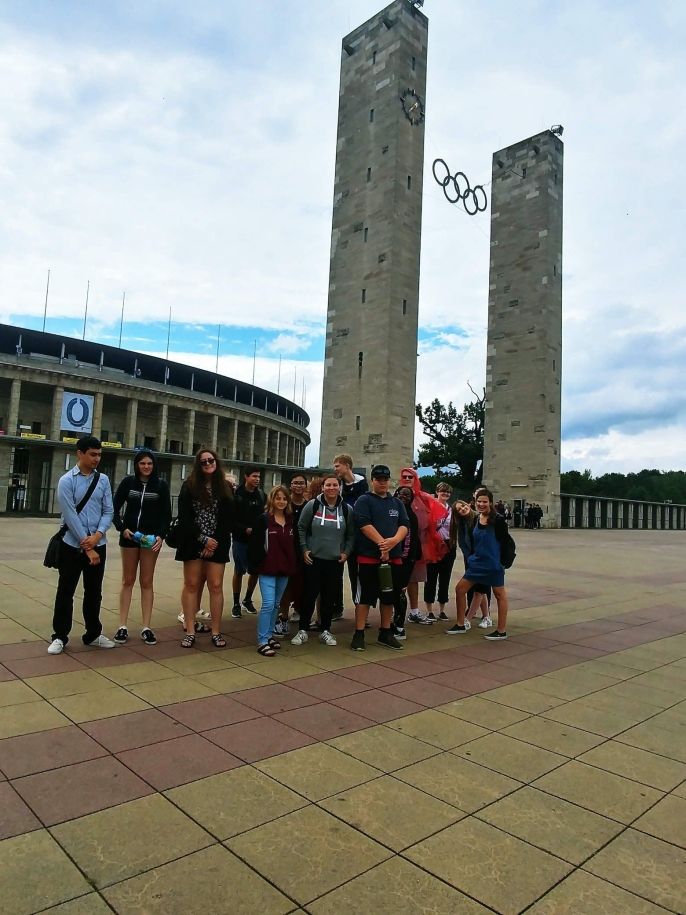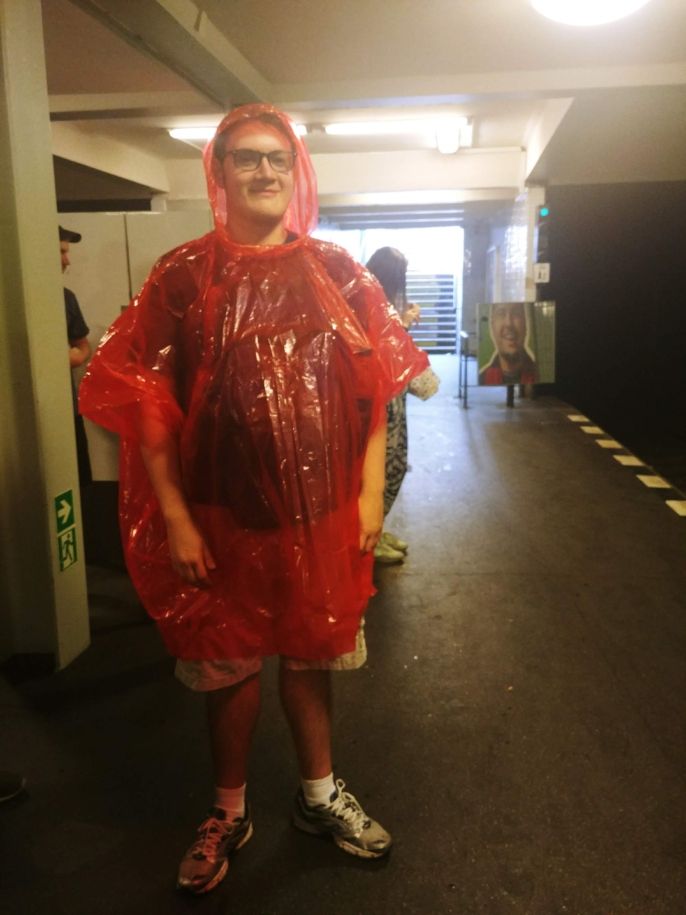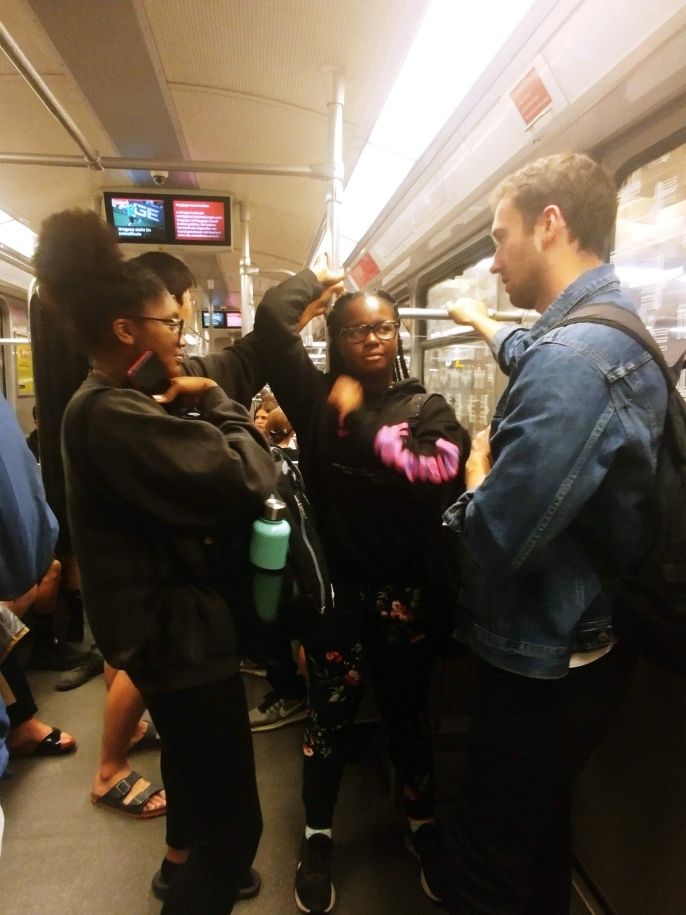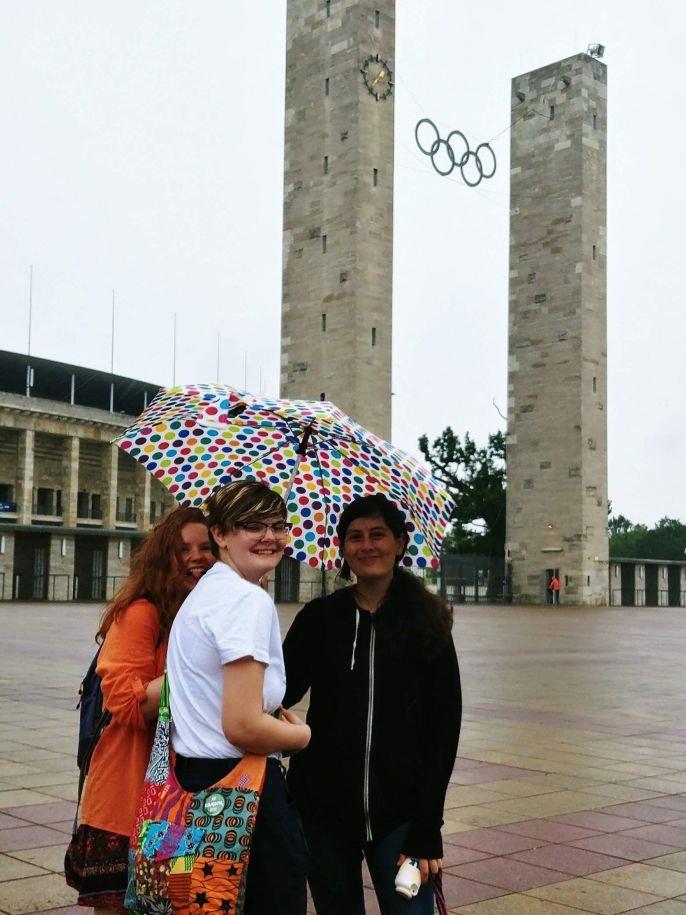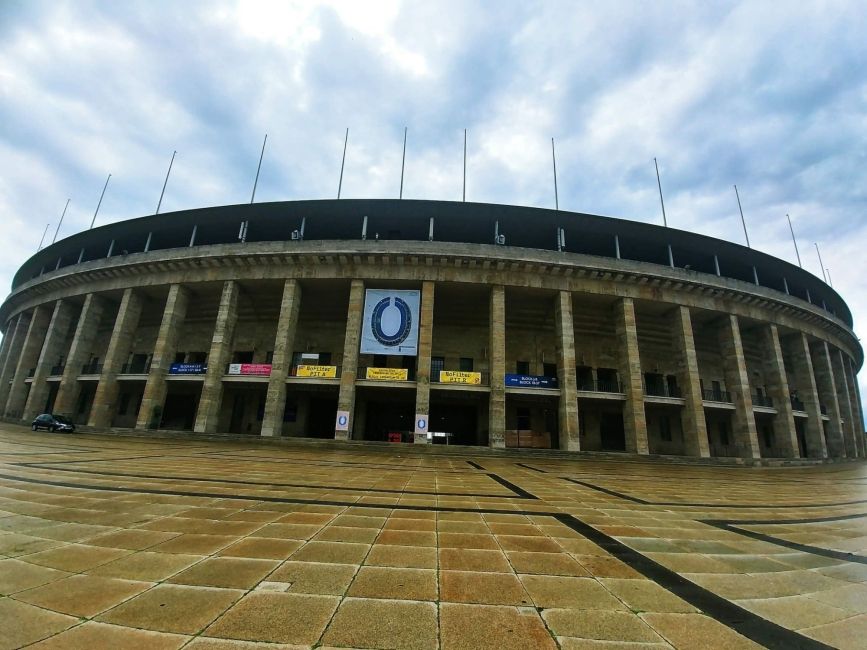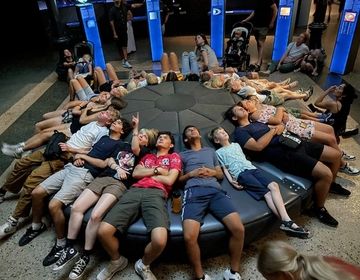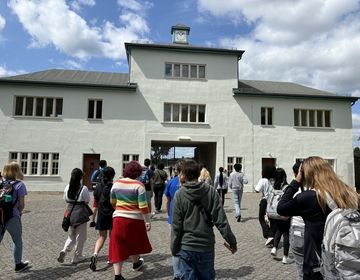Going for Gold at the Olympiastadion
Halli-hallo!
Our week of excursions continued with a trip to the Berlin Olympic Stadium. The day was rainy and miserably cold, but our students braved it as we made the trip out to Olympiapark to visit the modern arena and the once site of the 1936 Summer Olympic Games. Not only is the stadium itself an impressive sight to behold, but it is even more impressive when you learn about the historical and architectural importance of the building over the last 80 years. During our tour, we learned about the many renovations the stadium has overgone. It was once the biggest open-air arena in the world with over 100,000 spectator spots (some of those were standing room only) - now the arena seats 75,000 and hosts sporting events as well as musical guest like The Rolling Stones (who were preparing to play on June 22nd) and Beyonce, who will play sometime in July.
Perhaps its most renowned use was as the Olympic Stadium in 1936 when the Nazis decided to use the Olympic Games in 1936 for propaganda purposes. Adolf Hitler ordered the construction of a totally new Olympiastadion which was designed by architect Werner March. Some changes were made to the original 1916 structure, mostly making it more impressive and expansive. The stadium had a special stand for Adolf Hitler and his political associates, including special entrances, staircases, and driveways. Many people remember the 1936 Olympic Games for the track and field events where black runner Jesse Owens won many events and crushed Hitler's myth of "Aryan Supremacy." Another interesting fact was that the 1936 Olympic Games were the first to include the Olympic torch relay and a they built a large flame receptacle to receive it at the start of the Games.
We also learned about some of the neat architectural features of the stadium such as the support-free concrete staircase, the first of its kind and the fact that all the new renovations, post-1936, were done in wood so that they can be removed easily at any time to revert the structure back to its semi-original state.
The day was cold and long but the tour gave us another interesting look into Germany's history as it relates to politics and sports and it was really special to be in a place where so many important events took place - although to be honest, I think the students were just really happy to be out of the rain for a few hours. Check out our gallery to see some images of the day.
Danke und bis bald!
Julianne
Related Posts
Museum für Naturkunde Excursion
Berlin Language & Culture students visited the Museum für Museum für Naturkunde – Leibniz-Institut für Evolutions- und Biodiversitätsforschung (Museum of Natural History – Leibniz Institute for Evolution and Biodiversity Science)... keep reading
Exploring the Reichstag Dome
On Monday, students from the Language and Culture program had the opportunity of visiting the iconic dome atop the Reichstag, the seat of Germany’s federal parliament (the Bundestag). As they... keep reading
Sachsenhausen Memorial Visit
On Wednesday, students of the Language and Culture program visited the Sachsenhausen concentration camp. Students were very interested in learning about the history of the camp and how it came... keep reading
